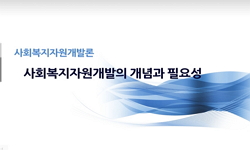These studies aimed to determine how lighting might be used to improve feed intake and reduce aggressive behavior in newly weaned pigs. To examine whether this objective could be achieved an experiment was conducted to compare performance, behavior an...
http://chineseinput.net/에서 pinyin(병음)방식으로 중국어를 변환할 수 있습니다.
변환된 중국어를 복사하여 사용하시면 됩니다.
- 中文 을 입력하시려면 zhongwen을 입력하시고 space를누르시면됩니다.
- 北京 을 입력하시려면 beijing을 입력하시고 space를 누르시면 됩니다.
https://www.riss.kr/link?id=A101679274
- 저자
- 발행기관
- 학술지명
- 권호사항
-
발행연도
2001
-
작성언어
English
- 주제어
-
등재정보
SCIE,SCOPUS,KCI등재
-
자료형태
학술저널
-
수록면
280-287(8쪽)
- 제공처
-
0
상세조회 -
0
다운로드
부가정보
다국어 초록 (Multilingual Abstract)
These studies aimed to determine how lighting might be used to improve feed intake and reduce aggressive behavior in newly weaned pigs. To examine whether this objective could be achieved an experiment was conducted to compare performance, behavior and body condition of weaners over 17-45 days, provided similar lighting quality (i.e. color temperature, color rendering index and lighting distribution) after weaning that piglets experienced prior to weaning. Triphosphor (TP) lighting to simulate daylight was provided during the day while at night, Pascal red (PR) lighting was provided to simulate the night-light piglets previously had received from infrared heating lamps. This treatment was compared to weaners provided conventional cool-white fluorescent light during the day only. Weaners on treatment lighting from 17-45 days of age showed no improvement in body weight or feed conversion at 24, 31, 38 and 45 days compared to the controls. There was, however, a significant improvement (p<0.05) in feed intake in the first week of weaning for weaners provided TP/PR lighting. Over the first 3 days of weaning, pigs on TP/PR lighting showed an increase (p<0.05) in the incidence of ear chewing but reduced (p<0.05) levels of nosing the abdomen of other pigs and reduced (p<0.05) occurrences of being stood on by other pigs. Females exhibited more (p<0.05) mounting and nosing behaviors and rubbing the heads of other pigs than males. On the other hand, males engaged in more (p<0.05) fighting, nipping, ear chewing and standing on other pigs compared to females. Pigs provided PR lighting on the first night of weaning engaged in higher (p<0.05) incidences of nosing and tail sucking behaviors, more (p<0.05) head thrusting, fighting and ear chewing compared to control pigs. The body condition of weaners provided the TP/PR lighting treatment was significantly poorer (p<0.05) compared to weaners on control lighting. In conclusion there was no improvement in production performance of weaners provided new technology lighting apart from the improvement in feed intake in the first week weaners were exposed to the TP/PR lighting.
동일학술지(권/호) 다른 논문
-
Effect of Declawing on Behavior of Farmed Emus
- Asian Australasian Association of Animal Production Societies
- Glatz, P.C.
- 2001
- SCIE,SCOPUS,KCI등재
-
Effect of Helminthiasis on Zinc Metabolism
- Asian Australasian Association of Animal Production Societies
- Musalia, L.M.
- 2001
- SCIE,SCOPUS,KCI등재
-
Low Cholesterol Mozzarella Cheese Obtained from Homogenized and β-Cyclodextrin-Treated Milk
- Asian Australasian Association of Animal Production Societies
- Kwak, H.S.
- 2001
- SCIE,SCOPUS,KCI등재
-
Color Determination of Beef Rib Eye Using Near Infrared Spectroscopy
- Asian Australasian Association of Animal Production Societies
- Kang, J.O.
- 2001
- SCIE,SCOPUS,KCI등재







 ScienceON
ScienceON






